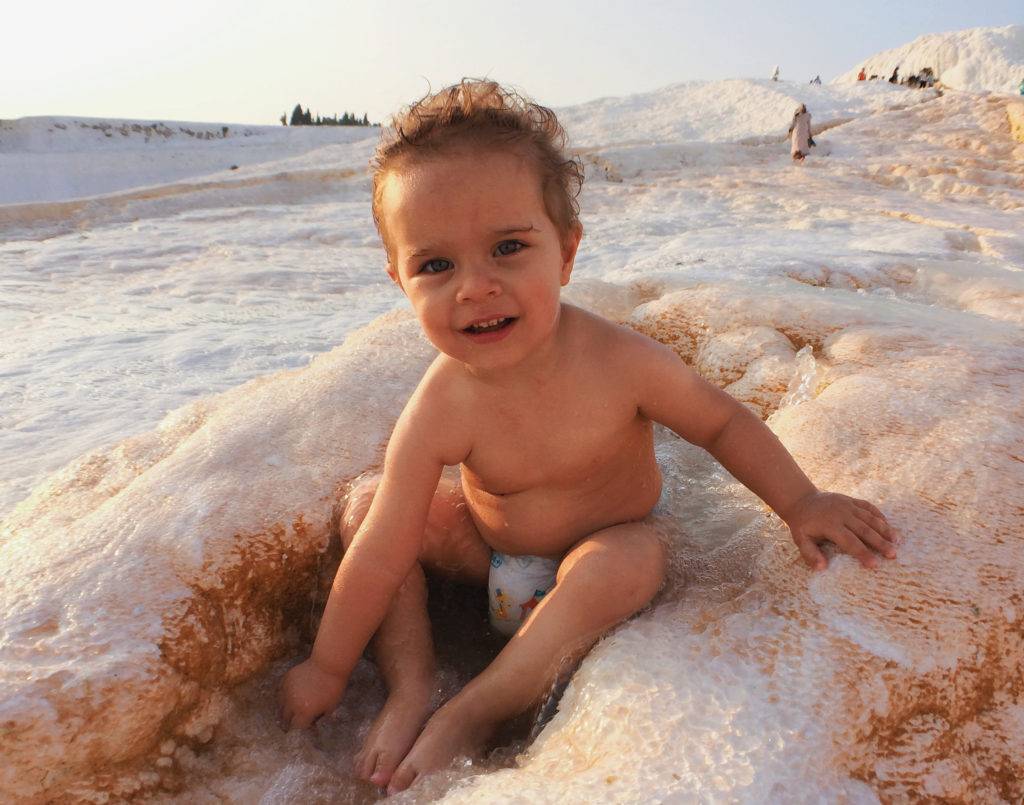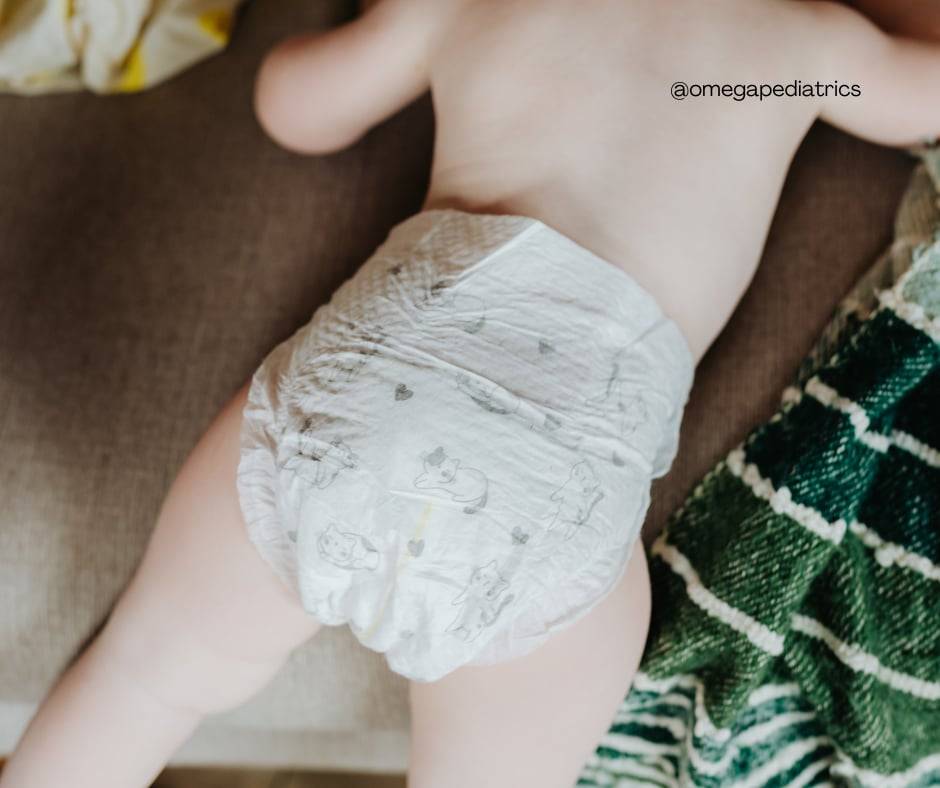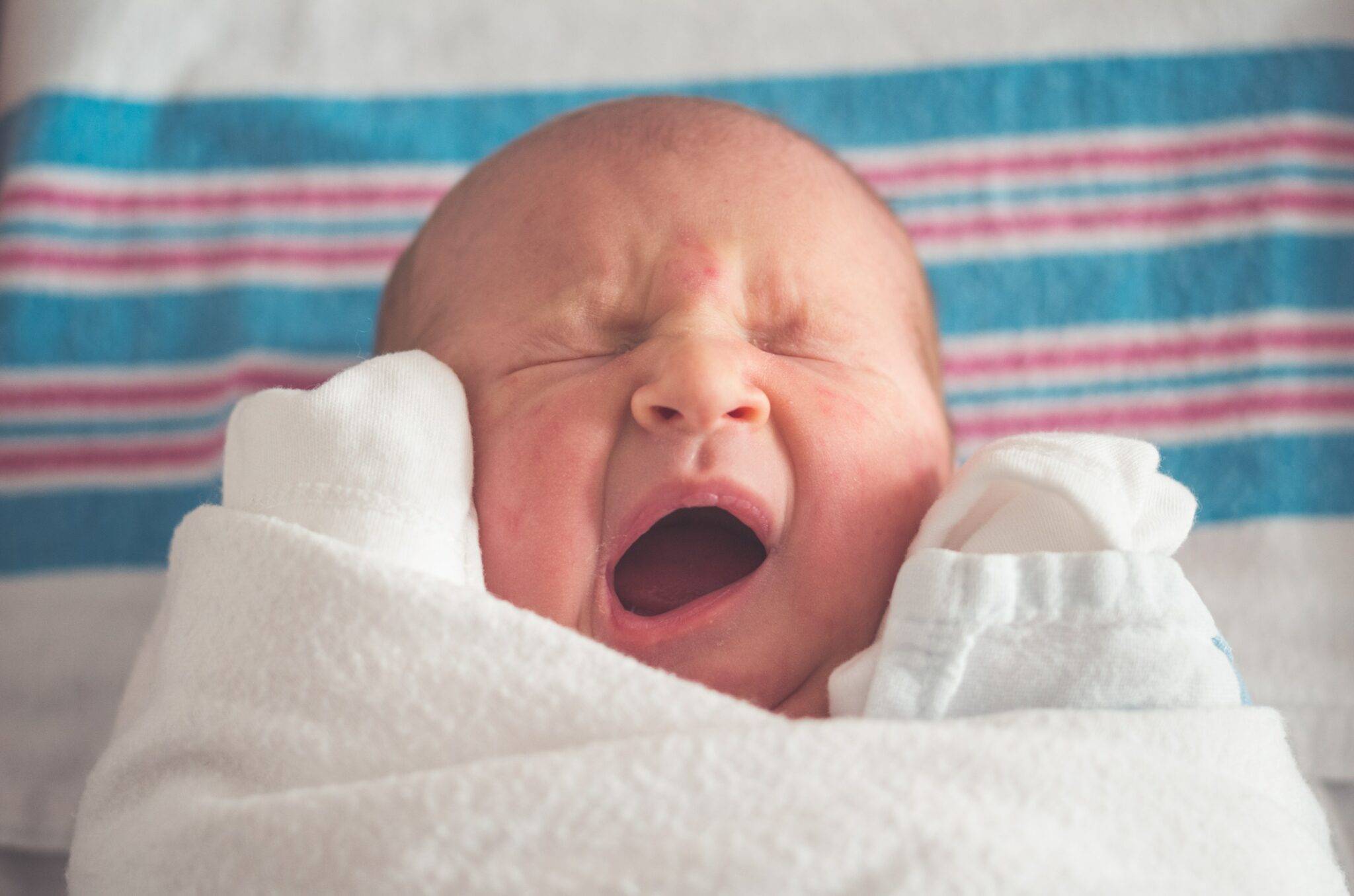Welcoming a newborn baby into the family is an incredibly joyful and transformative experience. Along with the excitement, however, comes a long list of tasks to prepare for the baby’s arrival. One of the most important preparations involves ensuring that you have the right clothes for your newborn.
Newborns have delicate skin, are sensitive to temperature changes, and require clothing that’s comfortable and functional. With so many options on the market, it can be overwhelming to decide what clothing is truly essential for your baby.
This comprehensive guide will walk you through the essential newborn baby clothes every parent needs to help make their journey into parenthood smoother and stress-free.
The Importance of Proper Newborn Clothing

Before we dive into the specifics of what clothing your newborn needs, it’s crucial to understand why having the right clothing is important.
- Newborns are Sensitive to Temperature: Newborns are highly vulnerable to temperature fluctuations because their ability to regulate body temperature isn’t yet fully developed. Layering clothes appropriately and choosing the right fabrics ensures your baby stays comfortable and safe.
- Newborns have Sensitive Skin: Newborns have extremely sensitive skin. The wrong type of fabric or clothing that’s too tight causes irritation, discomfort, or even rashes. Soft, breathable materials like cotton are the best choices, as they’re gentle on the skin and allow for proper air circulation.
- Ease of Use: This is a key factor when it comes to newborn clothing. As a parent, you’ll be changing your baby’s clothes multiple times a day due to spit-ups, diaper leaks, and other messes. Clothes that are easy to put on and take off will make these frequent changes much easier for you and your baby.
Must-Have Clothing Items for Newborns
1. Onesies (Bodysuits)
Also known as bodysuits, are an absolute staple in any newborn’s wardrobe. Onesies are the cornerstone of a newborn’s wardrobe, one-piece garments that cover the baby’s torso, making them incredibly comfortable and practical for everyday wear. The other features are::
- Have snaps at the bottom which make diaper changes quick and easy.
- Ideal for keeping your baby’s diaper securely in place, which helps prevent leaks and keeps your baby clean and dry.
- Double as pajamas during warmer months, making them a multi-functional piece of clothing.
- Easy to layer with other clothing
- Available in short and long sleeves, which makes them suitable for year-round wear
2. Sleepers (Footed Pajamas)
Also known as footed pajamas, are another essential item for newborns. These all-in-one outfits keep your baby warm from head to toe. The features are:
- Snaps or zippers that run down the front, making them easy to put on and take off.
- Easy-access closures make middle-of-the-night diaper changes a breeze.
- Built-in feet eliminate the need for separate socks, which is particularly useful since baby socks tend to slip off.
- Footed design keeps your baby’s feet warm without the need for additional clothing items.
- Great for daytime naps and can be worn on their own or layered with a swaddle or blanket.
- Perfect for nighttime wear, ensuring your baby stays cozy and comfortable throughout the night.
3. Swaddle Blankets

Swaddling is an age-old practice that helps soothe newborns by mimicking the snug, secure feeling of being in the womb. Investing in high-quality swaddle blankets will make your life as a new parent much easier. The features are:
- Wraps around your baby securely, helping them feel safe and comfortable, which in turn promotes better sleep.
- Made from soft, breathable fabrics like cotton or muslin, which are gentle on your baby’s skin.
- Must-have for the first few months of your baby’s life. They help calm a fussy baby, reduce the startle reflex, and promote longer periods of sleep.
- Other uses can be lightweight blankets, nursing covers, or even burp cloths in a pinch.
4. Beanies and Hats
Newborns lose a significant amount of body heat through their heads, which makes keeping their heads covered an important aspect of temperature regulation. Since newborns are still learning to regulate their body temperature, a hat makes a difference in keeping them comfortable
- Soft, warm hat for cooler months or when your baby is exposed to cold air and drafts.
- Made from breathable fabrics like cotton, which are gentle on your baby’s skin and help prevent overheating.
5. Mittens
Newborns often have long, sharp nails and limited control over their movements, which leads to accidental scratches on their delicate skin. Baby mittens are soft gloves that cover your baby’s hands, preventing them from scratching their face or other parts of their body. Choose mittens that are soft, breathable, and easy to put on and take off.
- Protects your baby’s delicate skin from scratches, especially in the first few weeks when their nails are still very sharp.
- Made from soft, breathable fabrics like cotton that are designed to stay on your baby’s hands without being too tight.
- Keep your baby’s hands warm, particularly during the colder months.
6. Socks and Booties
Keeping your baby’s feet warm is crucial, especially if they’re not wearing footed pajamas or are spending time outdoors.
- Designed to stay on your baby’s feet without being too tight, providing an extra layer of warmth and protection. Look for socks made from soft, stretchy materials that won’t leave marks on your baby’s skin.
- Keep your baby’s feet warm, particularly in cooler weather or when your baby is wearing outfits that don’t cover their feet.
- Worn with onesies, pants, or dresses, making them a versatile addition to your baby’s wardrobe.
- Protect your baby’s feet from dirt and other environmental factors when they’re not wearing shoes.
7. Kimono-Style Shirts
These are a great option for newborns because they don’t have to be pulled over the baby’s head, which can sometimes be challenging for parents and babies.
- Features side snaps or ties, making dressing and undressing your baby easier and more comfortable, especially when your baby is very small.
- Particularly useful during the early weeks when your baby’s umbilical cord stump is still healing, as they avoid putting pressure on the belly area.
- Make it easier to dress your baby without having to maneuver their head and neck through a small opening.
- Available in short and long sleeves that can be layered with other clothing items for added warmth.
8. Leggings or Pants
While onesies cover the torso, you’ll need leggings or pants to keep your baby’s legs warm. Look for options with elastic waistbands that won’t dig into your baby’s belly.
- Made from soft and stretchy materials that allow for easy movement.
- Essential for layering and keeping your baby’s legs warm, especially in cooler weather.
- Paired with onesies, shirts, or sweaters to create a comfortable and cozy outfit.
- An extra layer of protection for your baby’s legs, whether they’re crawling, playing, or just lounging.
9. Outerwear (Jackets, Sweaters, and Snowsuits)
Depending on the season and climate, you may need to invest in some outerwear for your newborn. A warm jacket or sweater is essential for cooler weather, while a snowsuit is a must for winter babies who will be spending time outdoors. Outerwear provides the necessary warmth and protection for your baby during outdoor activities.
- Look for outerwear that’s easy to put on and take off
- Provides adequate warmth without being too bulky.
- Jackets and sweaters can be layered over other clothing to create a warm, comfortable outfit, while snowsuits are ideal for colder climates and winter weather.
When choosing outerwear, consider the weather and your baby’s comfort, ensuring that they stay warm without overheating.
How to Choose the Best Newborn Clothes
Fabric Matters
When it comes to choosing clothes for your newborn, the fabric is one of the most important factors to consider. Newborns have incredibly sensitive skin, so choose fabrics that are soft, breathable, and free from harmful chemicals.
Cotton is often the best choice because it’s gentle on the skin, allows for proper air circulation, and is easy to clean. Organic cotton is an even better option, as it is grown without the use of pesticides or synthetic fertilizers, making it safer for your baby and better for the environment.
Easy to Put On and Take Off
Newborns are fragile, and dressing them can be a delicate process. For this reason, choose clothes that are easy to put on and take off. Look for items with wide necks, snap closures, or zippers that make dressing and undressing your baby easier.
Avoid clothes with too many buttons, tight openings, or those that have to be pulled over the head, as these can be difficult to work with and may cause discomfort for your baby.
Durability and Quality
Babies grow quickly, and their clothes need to withstand frequent washing. Look for high-quality items that won’t shrink, fade, or lose their shape after multiple washes. Durable clothing will last longer, which is especially important if you plan on using them for future siblings.
Quality fabrics and construction will also ensure that your baby’s clothes remain comfortable and functional throughout their use.
Size and Fit
Newborn clothes typically come in sizes based on weight, so know your baby’s estimated weight at birth to choose the right size. It’s also a good idea to have a few different sizes on hand, as babies grow quickly and may outgrow newborn sizes within a few weeks.
Clothes that are too tight cause discomfort or restrict movement, while clothes that are too loose are difficult to manage and may pose a safety risk.
Gender-Neutral Options
If you’re planning on having more children, gender-neutral clothing is a smart investment. Neutral colors like white, gray, and yellow are used for boys and girls, making it easier to reuse items for future siblings.
Gender-neutral clothes are also a great option if you’re waiting to find out the gender of your baby or if you simply prefer a more versatile wardrobe.
Tips for Shopping for Newborn Baby Clothes
- Don’t Overbuy: It’s tempting to buy every cute outfit you see, but newborns grow fast and won’t fit into their clothes for long. Stick to the essentials and buy a few items in each size to avoid overspending. Consider the practicality of each item—while a fancy outfit may look adorable, it might not be the most comfortable or easy to manage for everyday wear.
- Wash Before Use: Newborn skin is incredibly sensitive, so wash all new clothes before your baby wears them. Use a gentle, fragrance-free detergent to avoid any potential irritation. Washing the clothes before use will also remove any chemicals or residues from the manufacturing process, ensuring your baby’s clothes are clean and safe.
- Consider Secondhand: Babies outgrow their clothes so quickly that many items are barely worn before they’re too small. Consider shopping for secondhand clothes or accepting hand-me-downs from friends and family. This is a great way to save money while still getting high-quality items. You can also find it from secondhand stores and online marketplaces.
- Seasonal Considerations: When shopping for newborn clothes, think about the season your baby will be born in. If you’re expecting a winter baby, prioritize warm clothing like sleepers, hats, and snowsuits. For summer babies, lighter items like onesies and breathable blankets will be more appropriate. Also, the climate to know if rain gear or sun protection are needed.
- Think About Convenience: As a new parent, you’ll realize the importance of convenience. Look for clothes that are easy to change and wash. Items with too many layers or fasteners may look cute, but they’re a hassle when you’re dealing with a fussy newborn. Functional clothing makes your life easier and allows you to focus on what matters—caring for your baby.
Caring for Newborn Clothes
Laundry Tips
Here are some tips on washing newborn baby clothes:
- Use gentle detergent that’s free from dyes and fragrances to avoid irritating your baby’s skin.
- Use a mild cycle and cold water to preserve the quality of the fabric.
- It’s a good idea to use a mesh laundry bag for small items like socks and mittens to prevent them from getting lost in the wash.
- Air drying is recommended to maintain the softness and shape of the clothes.
- If using a dryer, choose a low-heat setting for newborn baby clothes.
Storing Clothes
- Store newborn baby clothes in a cool, dry place.
- It’s best to fold them neatly and place them in drawers or storage bins to keep them clean and organized.
- If you plan on saving clothes for future siblings, store them in airtight containers to protect them from dust, moisture, and pests. Label the containers by size and season to make it easier to find what you need when it’s time to use them again.
Choose the Right Newborn Baby Clothes to Keep Them Warm and Safe
Choosing the right newborn baby clothes is an essential part of preparing for their arrival. By focusing on comfort, convenience, and quality, you ensure that your baby has everything they need to stay warm, safe, and comfortable.
It’s not about having a huge wardrobe—it’s about having the right pieces that will make those early days with your baby a little easier. Whether you’re a first-time parent or adding to your family, these essential newborn baby clothes will help you feel prepared and ready to welcome your little one into the world.
For more parenting tips and advice, check out these articles:






